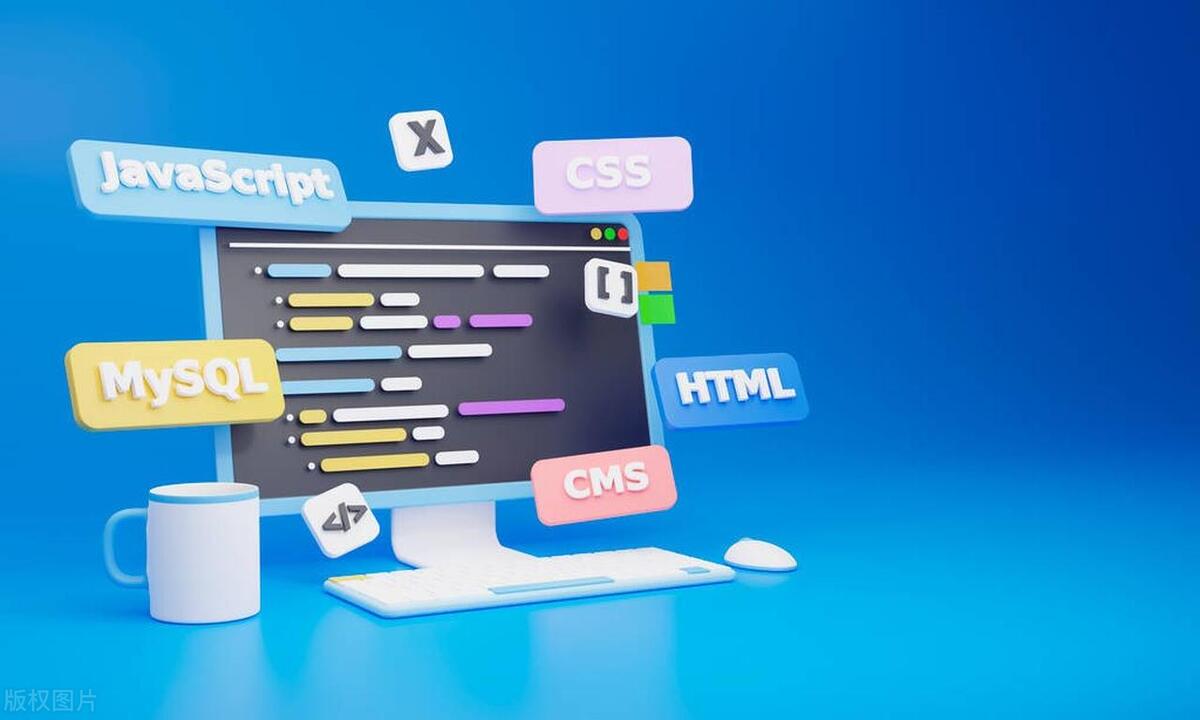Understanding Frontend Bundling and Transpilation
Jul 16, 2025 am 01:20 AMPackaging is to merge multiple files into a few files to reduce the number of requests, common tools such as Webpack and Vite; translation is to convert new version code into old versions to improve compatibility, commonly used tools such as Babel; in the construction process, they are usually first translated and then packaged, and different resources are processed through the loader mechanism; in development, they should reasonably split and package, avoid over-translation, configure Polyfill, and use efficient construction tools.

In front-end development, Bundling and Transpilation are two very basic but easily overlooked links. They directly affect the project's construction efficiency, running performance, and code compatibility. Understanding these two processes will not only help you optimize the project structure, but also allow you to locate the cause faster when you encounter construction problems.

What is Bundling?
"Bundling" refers to the process of combining multiple JavaScript, CSS, or other resource files into one or several files. In early web development, each script was loaded independently, which would result in a large number of HTTP requests, affecting the page loading speed. Through packaging tools (such as Webpack, Vite, and Rollup), we can merge these files to reduce the number of requests and improve loading efficiency.
Common practices include:

- Merge all JS files into
bundle.js - Extract CSS as a separate
.cssfile - Path processing and compression of static resources such as images
The packaging tool will also handle module dependencies. For example, if you use import to introduce another file, the packaging tool will automatically recognize and include it.
What is Transpilation?
"Transpilation" refers to code that converts code in one language to another. The most common example is to use Babel to convert ES6 code to ES5 for running in an older browser.

For example, you wrote a code like this:
const greet = (name) => console.log(`Hello, ${name}`);After Babel translation, it may become:
var greet = function greet(name) {
console.log('Hello, ' name);
};In addition to syntax conversion, Transpilation can also add Polyfill to supplement missing functions, such as Promise, Array.from, etc., so that new features can also run in old environments.
How to work together with packaging and translation?
Modern build tools often deal with both packaging and translation. Taking Webpack as an example, it will first parse the module dependencies in the entire project, then perform loader processing on each file (such as converting JS files with Babel), and finally package these processed files together.
The process is roughly as follows:
- Use
babel-loaderto translate.jsfiles - Compile
.scssfile usingsass-loader - Use
file-loaderorurl-loaderto process resources such as image fonts, etc. - Final output of merged JS and CSS files
This way of division of labor and collaboration makes the construction process both flexible and efficient.
What should you pay attention to in actual development?
- Reasonable splitting and packaging : Don’t type them all into one large file. You can split them into multiple chunks according to routes or functions and load them on demand.
- Avoid over-translation : If you do not need to support IE11, you do not need to translate ES6 to ES5, so that the generated code is simpler.
- Configure Polyfill : Some libraries do not add Polyfill by default, such as React, and you need to pay attention to whether the target environment supports the required features.
- Utilize modern construction tools : like Vite, without packaging in development mode, directly use native ESM, greatly improving the development startup speed.
Basically that's it. Front-end packaging and translation seem complex, but as long as you master the basic principles, you can meet most construction needs.
The above is the detailed content of Understanding Frontend Bundling and Transpilation. For more information, please follow other related articles on the PHP Chinese website!

Hot AI Tools

Undress AI Tool
Undress images for free

Undresser.AI Undress
AI-powered app for creating realistic nude photos

AI Clothes Remover
Online AI tool for removing clothes from photos.

Clothoff.io
AI clothes remover

Video Face Swap
Swap faces in any video effortlessly with our completely free AI face swap tool!

Hot Article

Hot Tools

Notepad++7.3.1
Easy-to-use and free code editor

SublimeText3 Chinese version
Chinese version, very easy to use

Zend Studio 13.0.1
Powerful PHP integrated development environment

Dreamweaver CS6
Visual web development tools

SublimeText3 Mac version
God-level code editing software (SublimeText3)
 How does React handle focus management and accessibility?
Jul 08, 2025 am 02:34 AM
How does React handle focus management and accessibility?
Jul 08, 2025 am 02:34 AM
React itself does not directly manage focus or accessibility, but provides tools to effectively deal with these issues. 1. Use Refs to programmatically manage focus, such as setting element focus through useRef; 2. Use ARIA attributes to improve accessibility, such as defining the structure and state of tab components; 3. Pay attention to keyboard navigation to ensure that the focus logic in components such as modal boxes is clear; 4. Try to use native HTML elements to reduce the workload and error risk of custom implementation; 5. React assists accessibility by controlling the DOM and adding ARIA attributes, but the correct use still depends on developers.
 Describe the difference between shallow and full rendering in React testing.
Jul 06, 2025 am 02:32 AM
Describe the difference between shallow and full rendering in React testing.
Jul 06, 2025 am 02:32 AM
Shallowrenderingtestsacomponentinisolation,withoutchildren,whilefullrenderingincludesallchildcomponents.Shallowrenderingisgoodfortestingacomponent’sownlogicandmarkup,offeringfasterexecutionandisolationfromchildbehavior,butlacksfulllifecycleandDOMinte
 What is the significance of the StrictMode component in React?
Jul 06, 2025 am 02:33 AM
What is the significance of the StrictMode component in React?
Jul 06, 2025 am 02:33 AM
StrictMode does not render any visual content in React, but it is very useful during development. Its main function is to help developers identify potential problems, especially those that may cause bugs or unexpected behavior in complex applications. Specifically, it flags unsafe lifecycle methods, recognizes side effects in render functions, and warns about the use of old string refAPI. In addition, it can expose these side effects by intentionally repeating calls to certain functions, thereby prompting developers to move related operations to appropriate locations, such as the useEffect hook. At the same time, it encourages the use of newer ref methods such as useRef or callback ref instead of string ref. To use Stri effectively
 Server-Side Rendering with Next.js Explained
Jul 23, 2025 am 01:39 AM
Server-Side Rendering with Next.js Explained
Jul 23, 2025 am 01:39 AM
Server-siderendering(SSR)inNext.jsgeneratesHTMLontheserverforeachrequest,improvingperformanceandSEO.1.SSRisidealfordynamiccontentthatchangesfrequently,suchasuserdashboards.2.ItusesgetServerSidePropstofetchdataperrequestandpassittothecomponent.3.UseSS
 A Deep Dive into WebAssembly (WASM) for Front-End Developers
Jul 27, 2025 am 12:32 AM
A Deep Dive into WebAssembly (WASM) for Front-End Developers
Jul 27, 2025 am 12:32 AM
WebAssembly(WASM)isagame-changerforfront-enddevelopersseekinghigh-performancewebapplications.1.WASMisabinaryinstructionformatthatrunsatnear-nativespeed,enablinglanguageslikeRust,C ,andGotoexecuteinthebrowser.2.ItcomplementsJavaScriptratherthanreplac
 Vue CLI vs Vite: Choosing Your Build Tool
Jul 06, 2025 am 02:34 AM
Vue CLI vs Vite: Choosing Your Build Tool
Jul 06, 2025 am 02:34 AM
Vite or VueCLI depends on project requirements and development priorities. 1. Startup speed: Vite uses the browser's native ES module loading mechanism, which is extremely fast and cold-start, usually completed within 300ms, while VueCLI uses Webpack to rely on packaging and is slow to start; 2. Configuration complexity: Vite starts with zero configuration, has a rich plug-in ecosystem, which is suitable for modern front-end technology stacks, VueCLI provides comprehensive configuration options, suitable for enterprise-level customization but has high learning costs; 3. Applicable project types: Vite is suitable for small projects, rapid prototype development and projects using Vue3, VueCLI is more suitable for medium and large enterprise projects or projects that need to be compatible with Vue2; 4. Plug-in ecosystem: VueCLI is perfect but has slow updates,
 How to manage component state using immutable updates in React?
Jul 10, 2025 pm 12:57 PM
How to manage component state using immutable updates in React?
Jul 10, 2025 pm 12:57 PM
Immutable updates are crucial in React because it ensures that state changes can be detected correctly, triggering component re-rendering and avoiding side effects. Directly modifying state, such as push or assignment, will cause React to be unable to detect changes. The correct way to do this is to create new objects instead of old objects, such as updating an array or object using the expand operator. For nested structures, you need to copy layer by layer and modify only the target part, such as using multiple expansion operators to deal with deep attributes. Common operations include updating array elements with maps, deleting elements with filters, adding elements with slices or expansion. Tool libraries such as Immer can simplify the process, allowing "seemingly" to modify the original state but generate new copies, but increase project complexity. Key tips include each
 Security Headers for Frontend Applications
Jul 18, 2025 am 03:30 AM
Security Headers for Frontend Applications
Jul 18, 2025 am 03:30 AM
Front-end applications should set security headers to improve security, including: 1. Configure basic security headers such as CSP to prevent XSS, X-Content-Type-Options to prevent MIME guessing, X-Frame-Options to prevent click hijacking, X-XSS-Protection to disable old filters, HSTS to force HTTPS; 2. CSP settings should avoid using unsafe-inline and unsafe-eval, use nonce or hash and enable reporting mode testing; 3. HTTPS-related headers include HSTS automatic upgrade request and Referrer-Policy to control Referer; 4. Other recommended headers such as Permis






